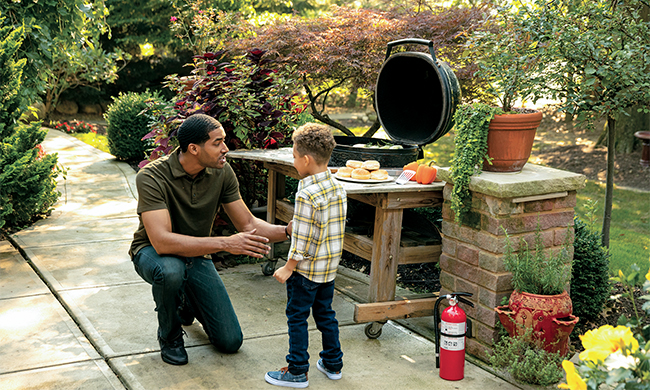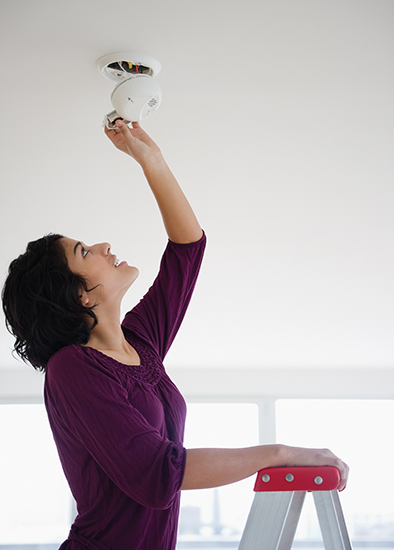5 Tips for Better Home Safety this Spring

As people become more active during the warmer months, keeping home safety top of mind can sometimes go by the wayside. However, when it comes to fire and carbon monoxide safety, you can never be too prepared.
Whether you are just beginning to take a stronger safety-first approach or looking to upgrade existing home safety equipment, keep these tips in mind as you spruce up your home for the season.

Don’t Just Check Batteries, Check the Alarm
It’s a good idea to review your safety equipment and ensure everything is in good working order at least a couple times each year. For example, every type of smoke alarm must be completely replaced every 10 years whether it’s hardwired into your home or operates on a battery. New smoke alarms commonly come with built-in 10-year batteries, meaning no battery changes, but it’s a good idea to test the units regularly. In fact, most manufacturers recommend weekly. You can also use this time to double-check the gauge on your fire extinguishers, replace batteries in flashlights, test security systems and replenish first-aid kits.
Inspect and Repair Outdoor Areas
Set aside time to evaluate any damage or potential hazards as the weather warms. For example, fallen tree branches and leaves can become trapped in gutters and pose a fire hazard. Shutters and fences can also weaken over time. To make sure they’re in good working condition, check that they are securely fastened.
Take Advantage of Smart Technology
According to the National Fire Protection Association, 40 years ago people had an average of 17 minutes to escape a home fire, but today the average has decreased to about 3 minutes due to synthetic materials used in modern-day home furnishings. To get the earliest warning of a home fire, install wire-free interconnected battery-powered combination smoke and carbon monoxide alarms. When one alarm senses a hazard, all alarms throughout the home sound in unison. Features like color-coded status rings and built-in 10-year sealed batteries make Kidde’s Wire-Free Interconnected Alarms a smart solution for optimal protection. They offer simple setup and operate without the hassle of hardwiring or a Wi-Fi connection.
Check Appliances
While going through your spring home safety checklist, take time to check your appliances or schedule an annual maintenance check for your stove, oven, heating system and more. According to the American Red Cross, dryers are responsible for approximately 9 of every 10 appliances fires. These common household appliances can collect dust, lint and other particles, which are potential fire hazards and can cause carbon monoxide leaks.
Keep Outdoor Activities in Mind
Cooking on grills is a popular pastime, but thousands of people are injured every year while using them. In fact, according to the National Fire Protection Association, nearly 9,000 home fires are started by grills each year. Now is a good time to get your home’s grilling area in tip-top shape. Keep a 3-foot safety zone around hot grills for children and pets, and have a multipurpose home fire extinguisher nearby as fires can occur unexpectedly. Propane and charcoal grills both put off carbon monoxide as a byproduct, so be sure keep your grill at least 10 feet from the home and ensure it is positioned away from windows, doors, vents and ductwork.
For more safety tips to better prepare your home, visit Kidde.com. (Family Features)
Susan Brewer Service First Real Estate (636)936-8600
Published on 2020-03-13 01:57:37

